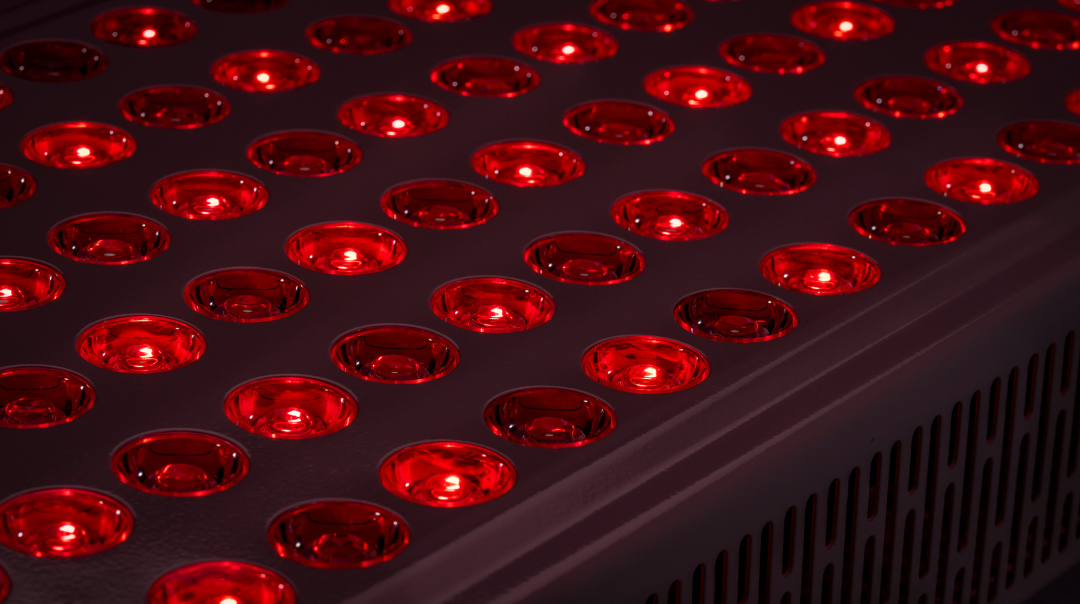Red Light Therapy
March 4
Red Light Therapy for Recovery in Fort Lauderdale
In the realm of recovery and rehabilitation, red light therapy (RLT), also known as photobiomodulation therapy (PBMT) or low-level laser therapy (LLLT), has emerged as an innovative and non-invasive treatment option. From professional athletes to everyday individuals dealing with chronic pain, RLT has gained a reputation for promoting faster recovery, reducing inflammation, and enhancing overall performance. But how does it work, and is it right for you? As a performance physical therapist at The MVMT Lab in Fort Lauderdale, I’ve incorporated red light therapy into treatment plans with great success, but like all advanced therapies, its benefits are maximized when the basics—sleep, nutrition, and hydration—are well-managed.
What Is Red Light Therapy?
Red light therapy uses specific wavelengths of red (typically 630-660 nanometers) and near-infrared light (typically 810-850 nanometers) to penetrate the skin and stimulate cellular function. Unlike UV light, which can damage skin cells, red and near-infrared light are non-ionizing and safe, promoting healing without harmful side effects.
The primary mechanism of action is at the mitochondrial level. The mitochondria, often referred to as the "powerhouses" of the cell, absorb the light energy, which enhances the production of adenosine triphosphate (ATP). ATP is the energy currency of the cell, fueling various biological processes, including tissue repair and inflammation reduction (Hamblin, 2016).
How Does Red Light Therapy Work?
When the mitochondria absorb red and near-infrared light, several key processes are triggered:
Increased ATP Production: More ATP means more energy for cells to perform their functions, especially in repairing damaged tissues and reducing inflammation.
Enhanced Blood Flow: RLT promotes vasodilation (the widening of blood vessels), improving circulation and delivering more oxygen and nutrients to tissues (Turrens, 2003).
Reduced Inflammation and Oxidative Stress: The light exposure modulates inflammatory processes and reduces oxidative stress, both of which are critical for recovery and pain reduction (Hamblin, 2017).
Collagen Production: RLT stimulates fibroblasts, leading to increased collagen production, which is essential for joint, skin, and muscle health (Avci et al., 2013).
What Does the Research Say?
A growing body of research supports the efficacy of red light therapy for various musculoskeletal conditions:
Muscle Recovery and Performance: A study by Leal-Junior et al. (2015) demonstrated that red light therapy reduced muscle fatigue and accelerated recovery in athletes. Participants experienced improved muscle strength and reduced soreness post-exercise.
Joint and Chronic Pain: Red light therapy has shown promise in treating joint disorders such as osteoarthritis. A systematic review by Huang et al. (2015) found that patients experienced significant pain reduction and improved joint function after consistent RLT sessions.
Wound Healing and Skin Health: RLT has been effective in accelerating wound healing by promoting cellular repair and reducing inflammation. Research by Avci et al. (2013) highlighted its benefits in skin rejuvenation and scar reduction.
Why Should You Seek Red Light Therapy?
Red light therapy isn’t just for professional athletes or people with chronic conditions—it can benefit a wide range of individuals looking to improve their recovery and overall well-being.
Athletes and Fitness Enthusiasts: RLT can reduce muscle soreness and speed up recovery after intense workouts, helping you get back to training faster with less downtime.
Chronic Pain Sufferers: If you’re dealing with conditions like arthritis, fibromyalgia, or chronic joint pain, RLT can provide non-invasive relief without the side effects associated with medications.
Post-Injury Rehabilitation: For individuals recovering from surgery or injury, red light therapy can accelerate tissue repair, reduce inflammation, and improve mobility.
General Wellness and Skin Health: Beyond muscle and joint health, RLT is also effective for improving skin tone, reducing wrinkles, and promoting overall cellular health.
What to Expect During a Red Light Therapy Session
Red light therapy sessions are painless, quick, and non-invasive. During a session at The MVMT Lab, you’ll sit or lie comfortably while the targeted area is exposed to red or near-infrared light for about 10-20 minutes. Most clients report feeling a gentle warmth but no discomfort.
For best results, RLT should be done consistently, often two to three times per week, depending on your specific needs and goals. While some individuals experience immediate relief, others may require several sessions to see significant improvements.
Conclusion: Integrating Red Light Therapy Into Your Recovery Routine
Red light therapy is a powerful tool for recovery, but it’s not a magic bullet. To get the most out of RLT, it’s essential to pair it with foundational recovery practices like proper sleep, balanced nutrition, and adequate hydration. At The MVMT Lab in Fort Lauderdale, we take a holistic approach to performance and recovery, ensuring that advanced treatments like red light therapy are integrated into a comprehensive plan tailored to your unique needs.
If you’re looking to reduce pain, speed up recovery, or enhance your overall health, red light therapy might be the missing piece in your recovery puzzle. Schedule an appointment at The MVMT Lab today!
References
Avci, P., Gupta, A., Sadasivam, M., et al. (2013). Low-level laser (light) therapy (LLLT) in skin: Stimulating, healing, restoring. Seminars in Cutaneous Medicine and Surgery, 32(1), 41-52.
Hamblin, M. R. (2016). Shining light on the head: Photobiomodulation for brain disorders. BBA Clinical, 6, 113-124.
Hamblin, M. R. (2017). Mechanisms and applications of the anti-inflammatory effects of photobiomodulation. AIMS Biophysics, 4(3), 337-361.
Huang, Y. Y., Chen, A. C. H., Carroll, J. D., & Hamblin, M. R. (2015). Biphasic dose response in low-level light therapy. Dose-Response, 7(4), 358-383.
Leal-Junior, E. C. P., Vanin, A. A., Miranda, E. F., et al. (2015). Effect of photobiomodulation therapy (PBMT) on markers of muscle damage: A systematic review and meta-analysis. Lasers in Medical Science, 30(2), 925-939.
Turrens, J. F. (2003). Mitochondrial formation of reactive oxygen species. The Journal of Physiology, 552(2), 335-344.
